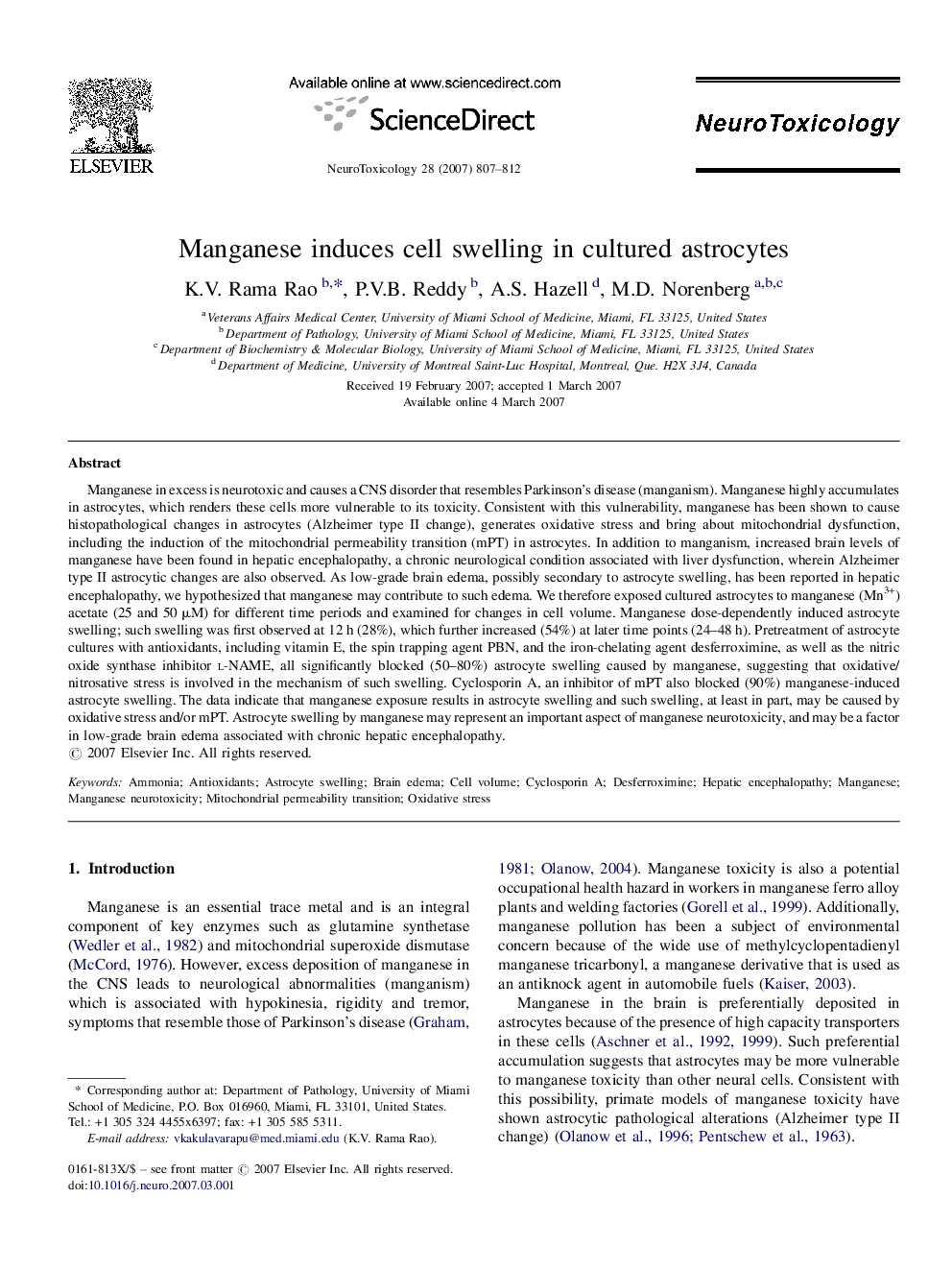| Article ID | Journal | Published Year | Pages | File Type |
|---|---|---|---|---|
| 2590474 | NeuroToxicology | 2007 | 6 Pages |
Manganese in excess is neurotoxic and causes a CNS disorder that resembles Parkinson's disease (manganism). Manganese highly accumulates in astrocytes, which renders these cells more vulnerable to its toxicity. Consistent with this vulnerability, manganese has been shown to cause histopathological changes in astrocytes (Alzheimer type II change), generates oxidative stress and bring about mitochondrial dysfunction, including the induction of the mitochondrial permeability transition (mPT) in astrocytes. In addition to manganism, increased brain levels of manganese have been found in hepatic encephalopathy, a chronic neurological condition associated with liver dysfunction, wherein Alzheimer type II astrocytic changes are also observed. As low-grade brain edema, possibly secondary to astrocyte swelling, has been reported in hepatic encephalopathy, we hypothesized that manganese may contribute to such edema. We therefore exposed cultured astrocytes to manganese (Mn3+) acetate (25 and 50 μM) for different time periods and examined for changes in cell volume. Manganese dose-dependently induced astrocyte swelling; such swelling was first observed at 12 h (28%), which further increased (54%) at later time points (24–48 h). Pretreatment of astrocyte cultures with antioxidants, including vitamin E, the spin trapping agent PBN, and the iron-chelating agent desferroximine, as well as the nitric oxide synthase inhibitor l-NAME, all significantly blocked (50–80%) astrocyte swelling caused by manganese, suggesting that oxidative/nitrosative stress is involved in the mechanism of such swelling. Cyclosporin A, an inhibitor of mPT also blocked (90%) manganese-induced astrocyte swelling. The data indicate that manganese exposure results in astrocyte swelling and such swelling, at least in part, may be caused by oxidative stress and/or mPT. Astrocyte swelling by manganese may represent an important aspect of manganese neurotoxicity, and may be a factor in low-grade brain edema associated with chronic hepatic encephalopathy.
